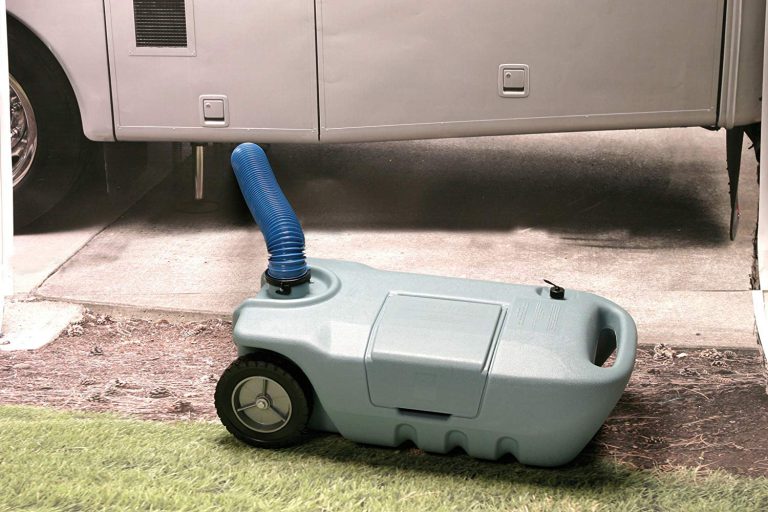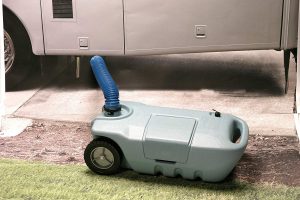

Having clean, fresh water to drink and use for cooking is really important when you’re out in your RV. Your fresh water RV tank may not be something you think about often, but it’s a very important part of your rig! Here’s what you need to know about your fresh water tank for RV.
How To Sanitize RV Freshwater Holding Tank
Whether you purchase a new motorhome, or a used one, you’re going to want to sanitize the RV water tank. It’s a simple process, but necessary to make sure you have safe water to drink. Here’s how to sanitize an RV fresh water tank:
- Fill your fresh water rv tank ¾ full with a solution of ½ cup bleach to 15 gallons of water
- If you can, drive around with the solution in the tank to slosh it around and get the solution to all parts of the tank.
- Let the solution sit in the tank for several hours.
- Open all faucets and drain the RV fresh water tank.
- Refill and drain the fresh water tank several times until you can no longer smell bleach.
Why You Should Sanitize RV Freshwater Tank
Even the smallest amounts of water left in the tank can provide a happy home for algae and bacteria. Your RV fresh water tank should be cleaned regularly so you have safe water to drink.
When To Sanitize RV Freshwater Tank
There are a few indicators that will let you know if it’s time to sanitize your tank. If any of the following are true, it’s time to clean!
- If the water in your fresh water tanks for RV has an odor or smells mildewy, you likely didn’t finish draining the RV fresh water tank completely and the tiny bit of water that was left stagnated.
- If your fresh water system hasn’t been used in more than a month, it’s time to sterilize it.
- If you used RV anitfreeze in your freshwater tank while storing it, you need to completely flush it out and sanitize. Also, always use RV antifreeze when winterizing your rig – never the antifreeze you’d use in a radiator. You’ll need to hook your RV up to an outside water source when you flush your antifreeze.
A lot of RVers think that if they’re not drinking water from the tap, they don’t need to sanitize the tank. In truth, if you’re using water for anything other than flushing the toilet, you need to sanitize your system and have a clean RV water tank.
Getting an RV Water Filter
If you’re concerned with keeping your RV water tank clean and the water drinkable, you also want an RV water filter. When shopping for a filter, think about how much water you plan to filter and look for one that isn’t too hard to install or use. You can choose between in-line filters, which you use at the entry point, compact canister filters, or reverse osmosis filters to purify your water.
RV Fresh Water Tank Repair
If your RV fresh water tank is leaking, or you just need to do RV fresh water tank maintenance, it is possible you can do the repairs yourself. If the damage is severe, you’ll want to hire a professional. For small cracks or holes, you can purchase RV holding tank patch kits and repair following the instructions. You may even want to purchase a kit to just keep on-hand in case you get a leak while you’re on the road.
You can also purchase portable RV fresh water tanks to take with you. A portable fresh water tank for RV is available at camping stores, Home Depot, and you can find them online as well.
Having clean, fresh water is important! If you follow these steps, and learn a little about your RV water tanks, you’ll be on your way to having pure, healthy water to drink while you’re on the road.
This post may contain affiliate links.
